History
St Stithians College – A Historical Sketch from a Rector’s Vantage Point
Albert Collins, William Mountstephens and Gilbert Tucker planted the seed which grew into the sturdy tree of St Stithians College. The first two men were nineteenth century immigrants from Cornwall, England, who developed a successful construction business in the burgeoning mining city of Johannesburg during the first decades of the twentieth century.
Gilbert Tucker was their accountant. In 1937 Collins died, but the other two men kept alive the idea of a school, forming a trust in 1941 to achieve this purpose and naming it Stithians – in celebration of the birthplace of Albert Collins in Cornwall, England. Collins and Mountstephens were staunch Methodists and generous philanthropists.
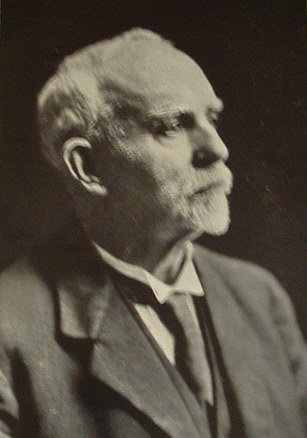
Albert Collins
In 1943 the Stithians trustees purchased a sizable property – a portion of the farm Driefontein – in the semi-rural farming and small-holding district north of Johannesburg. There were a number of obstacles to overcome, and it was to take a decade before St Stithians College opened its doors in January 1953.
It is striking that two of the three founders died before they could see their school in operation. People of vision who take a long view often do not see the fruit of their labours realised. The absence of short term gain does not dampen their enthusiasm. Their idea lit a flame, and a group of men and women took the flame and founded a Boys’ school, consisting of a College and a Preparatory School. Complementing the courage, enthusiasm and determination of the founders, the Foundation Stone on the chapel wall carries the delightful description of a school founded ‘in happy fulfilment’.
A school remembers its past through major events and the personalities of the Chairs of Council, Heads and influential teachers. This brief sketch cannot, of necessity, go into details, nor into the cultural fabric, and the focus will be on the institutional leaders.
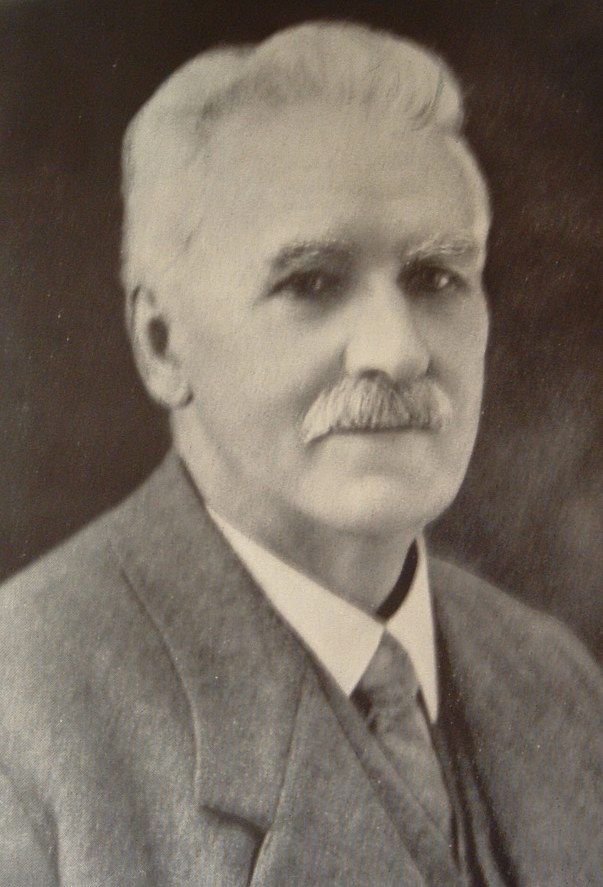
William Mountstephens
Between 1953 and the 1990s there were four Heads of the College: Wally Mears, Steyn Krige, Mark Henning and David Wylde. In the Prep, Walter MacFarlane, Owen Roberts, John Lees and Alan Wyborn succeeded one another at the helm. Over the same period, the honour roll of Chairs of Council was made up of Gilbert Tucker, Leslie Kent, Ray Bradley, Matt Eddy and Stanley Pitts.
1950’s to 1990’s
During its first forty years, St Stithians grew as a significant boys’ school in the educational landscape of the region. True to the intent of its founders, the school was closely affiliated with the Methodist Church, operating as a church circuit. The School motto One and All mirrored that of the Duchy of Cornwall. The creation of Sandton – a new suburb and business hub – during the 1960s and 1970s, and the growth of Johannesburg northwards, created a growing pool of potential students for the school.
The road of school growth and development was not a straightforward one. St Stithians experienced its fair share of tribulation, lean times and human drama amidst the successes, growing enrolment, and a reputation for excellent teachers and a well-rounded educational offering.
The school reflected the apartheid society of which it was part, enrolling white boys only until the first black students were enrolled in 1979 – alongside other church schools who challenged tight racial restrictions in the aftermath of the Soweto uprising of 1976.
At the time of its 40th birthday in 1993, St Stithians had an established reputation as one of the leading boys’ schools in South Africa. Student enrolment in the College stood at 667, with 400 boys in the Preparatory School. With David Wylde (Headmaster of the College since 1989) at the helm, exciting new developments were underway – the founding of Penryn College as a ‘sister school’ in Nelspruit, and the decision to launch a girls’ school on the property in 1995.
While St Stithians Heads of School had for a long time been influential on the national stage of independent education, Wylde travelled widely beyond the country, developing an international perspective which was to draw St Stithians into global organisations such as Round Square, Global Connections and the International Confederation of Principals.
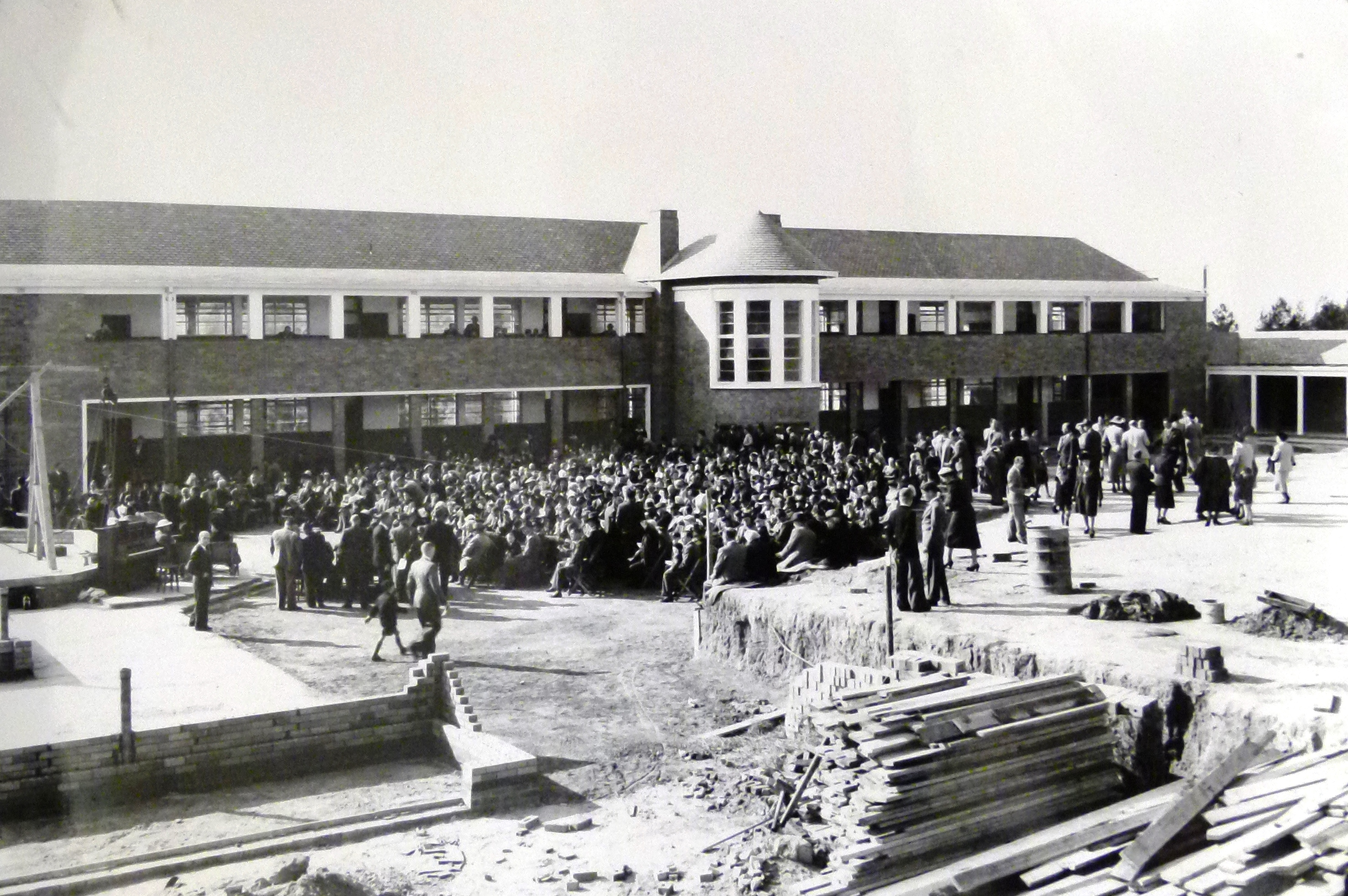
The official opening ceremony of the Boys' College in 1953
The mid-1990s saw a sea-change in the character of St Stithians. This coincided with a change in leadership of the College Council: in 1996, Rev Stanley Pitts, the prominent and dedicated Methodist figure who had served as Chair for the previous 26 years, handed over to another long-serving Council member, Dave Schroenn.
The new Chair was to be pivotal in implementing changes that had been discussed during the previous few years. The Boys’ Prep was expanded to take in an additional class per grade, resulting in a school of 650 boys from Grades 0-7. Both in the College and the Prep, there was significant investment in new buildings at this time.
St Stithians Girls’ Schools
The most significant change, however, came with the decision to enrol girls at St Stithians. Around the world during the 1970s and 1980s, many boys-only independent schools had opened their doors to girls, creating co-educational schools.
The reasons for this were partly financial and partly a reflection of the gender revolution which was changing industrialised societies. This trend did not occur in South Africa, where a commitment to single-sex education among leading public and private schools remained strong. During the 1990s a number of new independent schools were started in the country and they opened their doors as co-educational schools.
The growth mindset prevalent at St Stithians College in the mid-1990s gave rise to the bold and innovative decision to build two girls’ schools (junior and senior) on the campus. They were to be subject to the single governing authority of the St Stithians College Council, but would have their own Heads of School.
And so the ‘co-ordinate’ model was born – an educational space which combined single-sex schooling of boys and girls on the same campus, with the prospect of collaboration and co-instruction between the four schools. No other South African boys’ or girls’ independent school has taken a similar step, making St Stithians a unique institution in the country.

The development of the Girls' College
The one comparable example, and one which influenced the thinking of the St Stithians initiative, was the collaboration between the separately governed St Andrew’s College and Diocesan School for Girls in Grahamstown. These two Anglican schools, each with their separate and long histories, were located on a common boundary and, from small beginnings in the mid-1970s, had developed an academic programme of shared classes between boys and girls, particularly in the early years up to Grade 3 and in the senior years from Grades 10-12.
Initially called the St Stithians Collegiate, the girls’ schools came to be named St Stithians Girls’ College and St Stithians Girls’ Preparatory by the year 2000. The Collegiate opened its doors in 1995, with the enrolment of girls into the existing boys’ class of Grade 0, and the launch of Grade 1 and 2 classes for girls. During that year, the new girls’ schools were built – the single largest investment in building since the founding construction of the early 1950s.
The Foundation Stone echoed the ‘happy fulfilment’ expressed when the boys’ schools were opened 42 years earlier. In 1996, girls were enrolled into multiple grades, totalling 300 in the Junior School and 200 in the Senior School. Within two years, Senior School enrolment had leapfrogged to 500 students, and the first cohort of matriculants had set the academic bar high and made their mark in inter-school sport.
The story of the early years of the Second Foundation of these two schools is one of pioneering spirit, ambitious vision, the making of a new community, and the conscious embrace of debt as a means of financing an institution which grew rapidly and with a distinctive character. After six highly formative years, founding Head Anne van Zyl moved on to the challenge of founding a new school, Stanford Lake.
The baton of Girls’ College leadership was taken over by the Deputy Head, Ivanka Acquisto, in 2001. In the Girls’ Prep, Beryl Lourens was appointed as the first Head in 1997, succeeded after just one year by Lynne Rivett-Carnac, who was Head from 1998-2000. The year 2001 saw the arrival of Celeste Gilardi as the new Head, having previously been Deputy Head of the Primary school of Sacred Heart College. In short succession, the Girls’ Prep benefitted from the rich and accumulated experience of these three educational leaders.
The rapid development of the girls’ schools were accompanied by leadership changes in the boys’ schools between 1997 and 2000. Reflecting the growing complexity of the co-ordinate model, the Council decided in 1998 to appoint David Wylde as Rector, with executive oversight of all the schools. His successor in the Boys’ College was the Deputy Head, Ian McLachlan, who had been closely involved with the changing face of St Stithians since the mid-1990s.
In 1997, John Lees left the Boy’s Prep for Penryn College; he was succeeded by Alan Wyborn, previous teacher at the Boys’ Prep who was current Headmaster of The Ridge School. After three years, Wyborn was offered the opportunity to found a new school in the Western Cape, and he was succeeded as Head in 2000 by the youthful but experienced Alistair Stewart.
Creation of the Junior Preparatory School
The last component of the changing contours – an outsider might have called it a whirlwind – of St Stithians was the creation of the Junior Preparatory in 2001, incorporating the co-educational Grade 0 and the boys’ and girls’ classes of Grades 1 and 2.
By 2003, after much debate, the Junior Prep had become an integrated co-educational school. Mel Dace, the Deputy Head of the Girls’ Prep, was appointed as the first Head of the Junior Prep in 2001.
In just seven years, the two boys’ schools had multiplied through the birth of three new schools. Student enrolment had doubled, reaching a total of 2 400. Not only was St Stithians distinctive in its educational model; it had become the largest independent school in the country. Such rapid and far-reaching change brought with it opportunity, new energy, tension, and the need for wise and effective leadership.
With the Heads appointed between 1998 and 2001 – McLachlan, Stewart, Acquisto, Gilardi and Dace – David Wylde created a team that was to lead the schools for the next decade. Wylde himself, though, was to resign at the end 2002 – to become Headmaster of his old school, St Andrew’s College in Grahamstown.
He was succeeded as Rector by Stephen Lowry, who had been Principal of Sacred Heart College since 1996.
2003 to 2013
Any historical account which approaches the present day faces the challenge of seeing patterns in the detail. Recognising this challenge, the ten years between the 50th birthday in 2003 and the 60th in 2013 were characterised by a number of key themes which continued to shape St Stithians as a school of stature and significance.
Lowry led an important focus on the values base of St Stithians. The College’s leaders drew on the Honour Code which had been scripted by the Grade 12 leaders of 1995: Honour God, Honour Others,
Honour Self; and on the St Stithians statement of intent adopted in 1998: A South African School Making a World of Difference. The values proposition of the College was consolidated and elaborated in The Saints Charter. Secondly, the schools of St Stithians made large strides in developing an impressive leadership curriculum. Indirectly associated was the remarkable record of senior teachers who were appointed from St Stithians to headships in South African schools.
Third, St Stithians became renowned for its academic innovation on many fronts, from inclusive and differentiated learning to pioneering thinking skills approaches. Fourth, the Easter Sports Festival, which had begun in 1984 as South Africa’s first schools rugby festival, grew to include other sports codes and to become the country’s largest schools sports event.
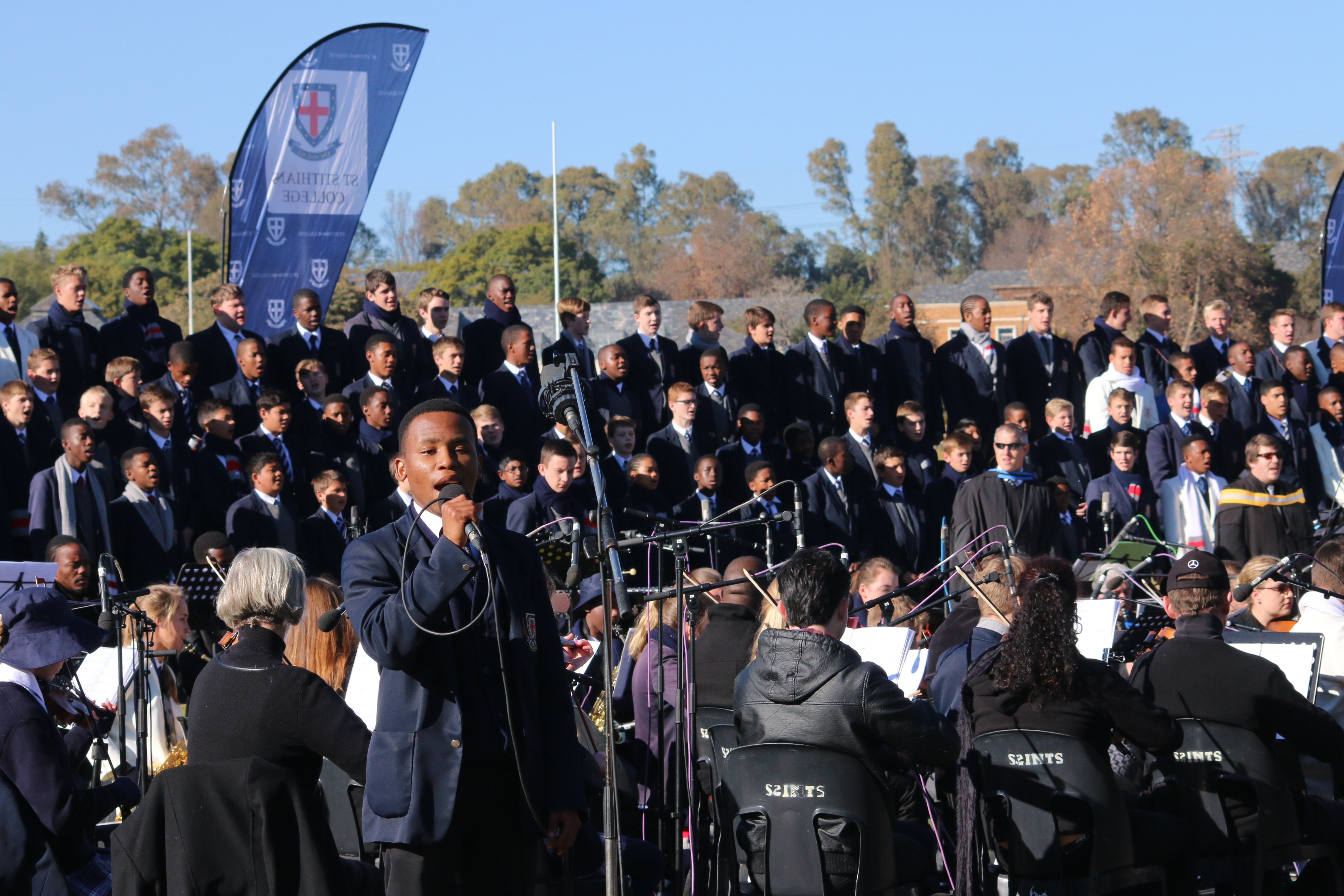
The fifth theme to emphasise is that after all the building and organisational developments of the years 1995-2001, St Stithians had a significant mortgage debt to pay off. To achieve these targets successfully, a conservative financial mindset had to prevail, and the new Chair of Council from 2005, Nick Dennis, was a key role-player in ensuring this. A decade after the building of the new schools the income statement reflected a positive variance on the bottom line – an impressive achievement.
A sixth theme was the embrace of ‘transformation’, taking a number of forms. In 2009, the College formally adopted a Transformation Charter which committed St Stithians to advance the demographic and cultural diversity of its students and staff, and specifically to increase the enrolment and employment of black people in becoming a more representative South African institution.
In 2005 the Thandulwazi Maths and Science Academy was created on the campus, with the express intent of committing St Stithians to offering quality education to previously disadvantaged students and teachers. This initiative was given added momentum when Bev Johnson was appointed as Foundation Director in 2010 and she successfully developed a fundraising campaign and an administrative structure for the Academy.
By 2014, Thandulwazi was contributing to enrichment education on Saturdays for 1 000 students and 1 100 teachers, and to the employment of 28 teacher interns – a community engagement initiative unrivalled among South African schools. In January 2015, the first full-time Director of the Thandulwazi Academy was appointed – Dr Themba Mthethwa.
A seventh and final theme of the past decade has been the growth of St Stithians as a ‘green’ school and an outdoor education school. A number of greening initiatives on the 105 hectare city campus, including a large onsite recycling depot, make the College a leader in this field. The building of Kamoka Bush School as a residential outdoor education facility on a game farm near Modimolle, opened in 2011, represented a firm commitment to advancing outdoor education an integral feature of a St Stithians education. The first Director of Kamoka was Kate Doyle, a teacher in the Girls’ College, and she was succeeded by Stephen Baytopp in January 2015.
In 2007, Ian McLachlan left the Boys’ College to set up the Royal Bafokeng Institute, a bold initiative that included a number of senior staff from St Stithians in the founding of Lebone II College at Phokeng. McLachlan was succeeded as Headmaster by one of his deputy heads, David Knowles. In 2013, Stephen Lowry was appointed as Principal of Waterford Kamhlaba School in Swaziland.
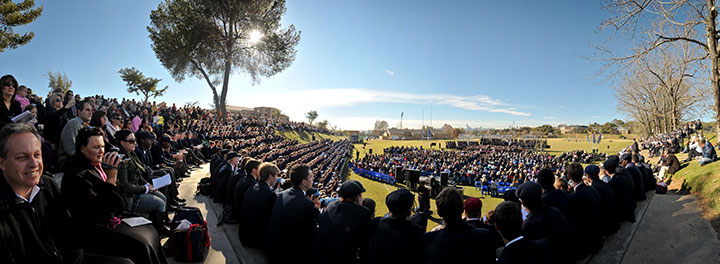
Campus 2053
Carel Nolte became the first alumnus to assume the role of Chair of Council, early in 2013, and Dr Tim Nuttall arrived from Somerset College in August 2013 as the third Rector of St Stithians. At the inauguration service for the new Rector in January 2014, the Presiding Bishop of the Methodist Church of Southern Africa, Zipho Siwa, urged that St Stithians be a ‘School of Dreams, a Valley of Hope’.
Giving expression to this injunction, Nuttall and Nolte have initiated Campus 2053, a long-range and ambitious framework for taking the College into the future. The first phase is encapsulated in Strategy 2025. St Stithians is today an outstanding and unique South African educational institution, consisting of seven schools with opportunities to express their distinctiveness and to combine in synergy – Junior Preparatory, Girls’ Prep, Boys’ Prep, Girls’ College, Boys’ College, Kamoka Bush School, and the Thandulwazi Maths and Science Academy.
Archives
The St Stithians Archive contains the historical records of the College dating back to the formation of the Trust in 1941. Click here to learn more about the archives, submit items to the archive, or to request access to the archive.






